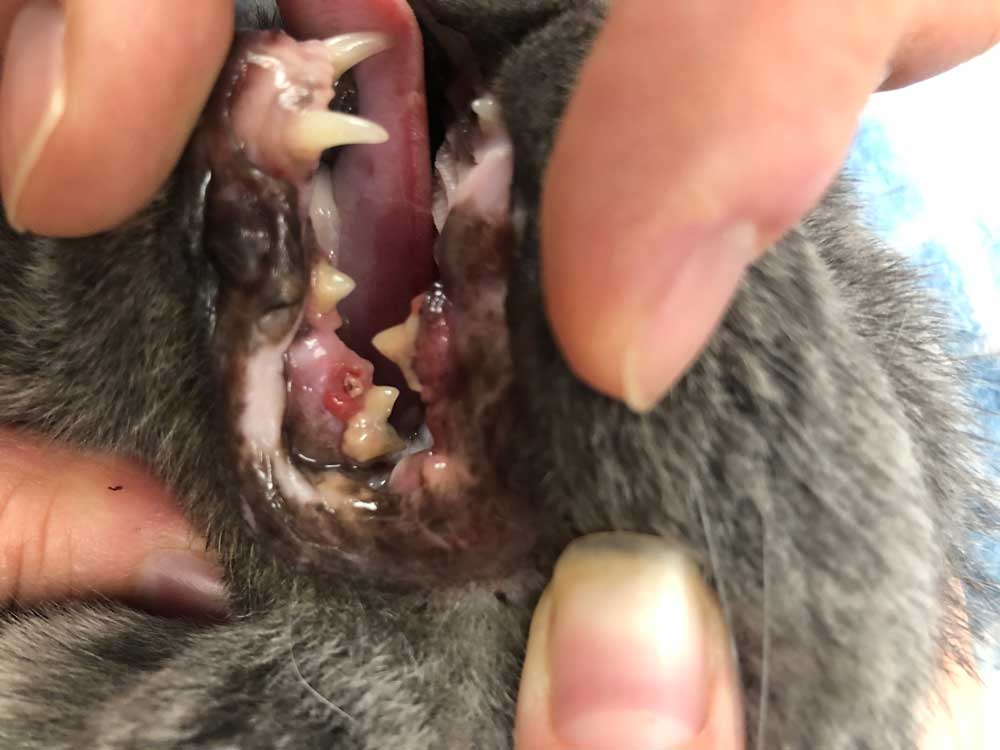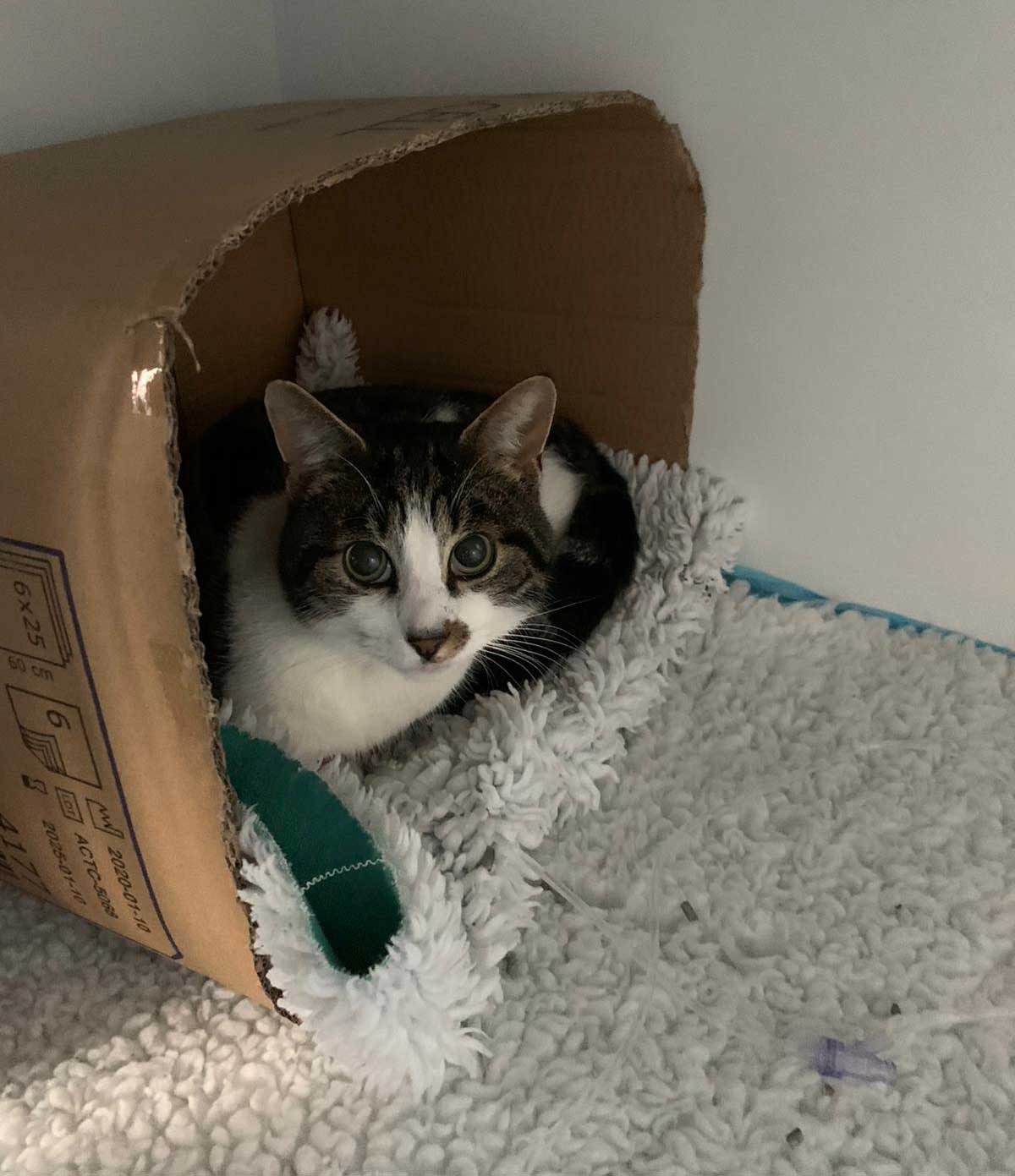10 May 2022
Matt Gurney discusses why vet surgeons should think carefully before cancelling a procedure due to concerns about anaesthesia.

Image: © #CRTVTY / Adobe Stock
Let’s start with a clinical situation. You are presented with an aged cat that has recently gone off its food. On examination, the cat has oral pain. You auscultate a heart murmur, which from your notes has not been detected before. When you start to quiz the owner about the cat’s respiratory rate, he says that sometimes he notices the cat does seem to breathe a little faster when resting.
What do you do? From examination, we are concerned that the cat is suffering due to the dental pain. We need to assess this further, which would require anaesthesia.
From the history, we are concerned about that heart murmur and the severity. Are we better to leave well alone? Well, that’s an uncomfortable position because of the pain. Should we start an oral analgesic, such as an NSAID? How successful will compliance be, given that the cat is off its food and already averse to oral handling (Figure 1)?

Initially, this case raises our stress levels a little as unknowns are present. Our risk assessment at this stage is scoring high. What if we go ahead with anaesthesia and the cat dies? What if we do nothing and the cat suffers with pain? A welfare issue exists at either end of this spectrum of options.
What is the owner’s position? Our most comfortable option is an owner who is totally onboard with a careful and thorough assessment, and a step-wise approach. For the author, his most uncomfortable position is an owner who says: “She’s an old cat, I don’t want to do anything, is she really in pain?” or: “I’m worried she will die under anaesthetic, so I don’t want to do anything”.
What is the owner’s approach to risk and how does this align with ours? We all have recollections of being lulled into a false sense of security when an owner says: “Okay, just go ahead, I’ll take the risk” and then when things go wrong, we find ourselves in a tricky position. Did the owner really understand the risks? Did they make an informed decision? Of course, we feel awful in this situation.
In explaining our preferred approach to the cat owner, can we take a welfare-first approach? Does it help the cat owner if they understand that our prime concern is addressing the pain this cat is suffering with? For ease of this argument, let’s put cost aside.
Our optimal option for this cat is full assessment to quantify those risks. So, we choose echocardiography to assess whether structural changes to the heart exist. With our cardiac scan, we use the American College of Veterinary Internal Medicine guidelines (Luis Fuentes et al, 2020) to determine the extent of the cardiac disease and help us understand if the cat would benefit from treatment. This should be a huge step forward for us, as those results help us decide if the cat is fit for anaesthesia and, if so, what precautions should we take under anaesthesia to reduce those risks. See Panel 1 for questions to consider in this case.
Once we have considered these questions, we have mitigated the risk and, hopefully, feel more confident in our approach.
Let’s think about this feline case using the principles of enhanced recovery after surgery (ERAS).
ERAS has been on the agenda of our medical colleagues since the 1980s, when Kehlet (1989) first determined that the more pronounced the stress response is in the perioperative period, the longer the recovery from surgery.
Recent guidelines typically list 15 to 20 perioperative factors to be considered for enhanced recovery programmes.
The stress response is a homeostatic mechanism comprised of hormonal and metabolic changes, which occur in response to anaesthesia and surgery (and anaesthesia without surgery). It is described as an ebb and flow, whereby catabolism occurs to provide substrates for the subsequent recovery. However, this evolutionary survival mechanism is most likely deleterious in a modern surgical context (Desborough, 2000).
In our feline example here, our aim is for our anaesthetic, dental and hospitalisation to have a minimal effect on the cat’s stress response, to ensure a rapid return to normality.
Clearly, an increase in stress hormones will have an impact on cardiac function – which is why we see cats that are close to failure being pushed into failure by anaesthesia.
We naturally assume in these cases that it was drug-related or we overloaded the cat with fluids – but you can see this is a multifactorial issue with the stress response at the centre of it.
As an example from human medicine, an optimal ERAS programme for major abdominal surgery (and specific to this surgery) includes:
Such elements have been shown to reduce postoperative complications such as ileus, nausea, and vomiting and encouraging early feeding. Early mobilisation of the patient is also essential.
One of our aims for reducing initiation of the stress response has to be a smooth anaesthetic, where depth of anaesthesia and use of analgesics prevents nociception while at the same time avoiding excessive depth.
Knowledge exists that in humans even short periods of deep anaesthesia correlate with a greater incidence of postoperative delirium and a decline in cognitive function.
The alpha-2 agonists fit the bill perfectly here, providing dose-dependent sedation and analgesia, working synergistically with opioids (Grimm et al, 2000).
Whether we are comfortable using these drugs in this case, though, depends entirely on our pre-anaesthesia echocardiography. Initial studies in dogs indicate a reduction in measured stress hormones, with medetomidine premedication compared to acepromazine (Väisänen et al, 2002) and clinical experience shows a smoother anaesthetic with either medetomidine or dexmedetomidine premedication.
Multimodal analgesic techniques play a prime role, notably preventive local anaesthesia. We can improve patient comfort and reduce our postoperative opioid use with these techniques.
What must be considered is that analgesia must be specific to the patient and the procedure. We are beginning to determine optimal analgesic options for common veterinary procedures.
Recognition exists that nerve blocks for cats undergoing dental extractions resulted in reduced anaesthetic requirement and improved comfort postoperatively.
Recent work recommends long-term analgesia for cats with severe dental disease following extractions (Watanabe et al, 2018), with the aim of enhancing recovery.
Local anaesthetic techniques are a must in all dental cases, and you can view videos of the maxillary and mandibular nerve blocks at www.zeropainphilosophy.com
A further overview can be found in the 2022 International Society of Feline Medicine (ISFM) guidelines on the management of acute pain in cats (Steagall et al, 2022).
Clearly, pain scoring plays a pivotal role in determining patient comfort. Studies by Kehlet et al in people show that postoperative assessment must include a procedure-specific functional outcome in addition to patient-reported pain scores.
The example for the cat undergoing dental work is a return to eating – which should be planned and monitored, ensuring the cat is offered palatable food in a stress-free environment post-surgery.
Use of validated pain scores will help us, and with dental pain – let’s consider the facial changes those cats demonstrate.
Ear position and muzzle shape have been shown to change significantly in response to pain, and are a key element of the Glasgow pain scale for cats and the Feline Grimace Scale.
Cat Friendly Clinic principles play a role in reducing stress and improving recovery from any procedure. Simply ensuring all postoperative patients recover in a quiet, well-monitored, cat-only space; have somewhere to hide in their cage (Figure 2); are handled gently; and are kept away from dogs and other cats will optimise their care.

With careful preoperative assessment, we can quantify the risks involved with anaesthesia. These findings allow us to carefully consider our anaesthetic approach and make the best decisions for the individual cat.
It also helps dramatically reduce our stress levels if we can understand that risk to the patient and explain these to our cat owners.